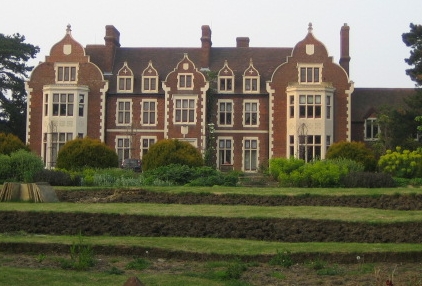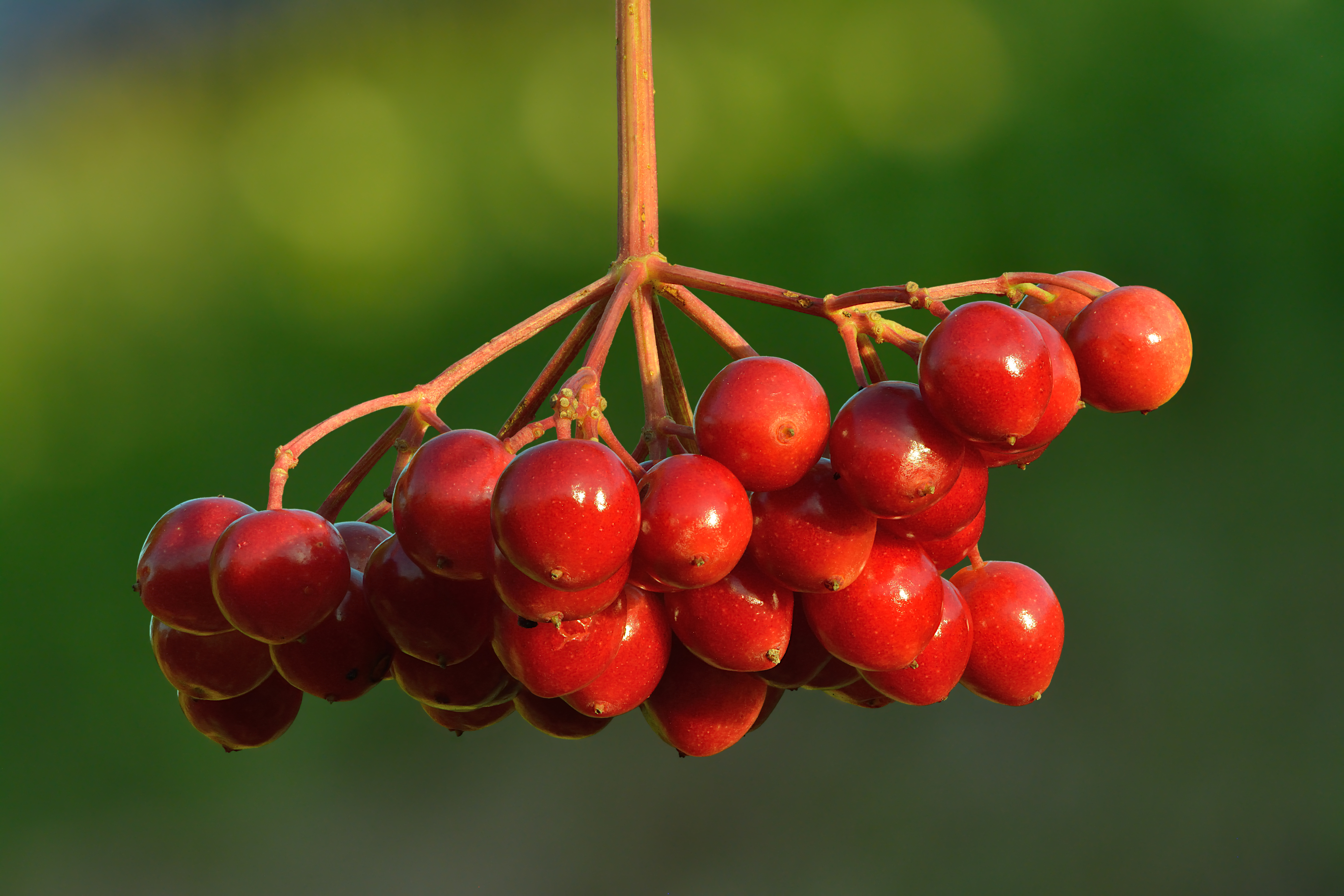|
Ham Home-cum-Hamgreen Woods
Ham Home-cum-Hamgreen Woods is a biological Site of Special Scientific Interest in Kingswood near Grendon Underwood in Buckinghamshire. It is composed of two separate areas, Ham Home Wood and Hamgreen Wood, and is a small part of the formerly extensive Bernwood Forest. The site is woodland on clay, and although most of it has been coppiced at different times, it has a varied structure, and rich variety of flora and invertebrates. These factors, together with the presence of wild service trees, show that the woods are ancient. The main tree is oak, with an understorey which includes wych elm, crab apple and guelder rose. Flowers include primroses and bluebells, and in wetter areas there are ragged robin and marsh bedstraw. The woods have the largest British breeding colony of the nationally rare black hairstreak butterfly. There is access from the A41 road The A41 is a trunk road between London and Birkenhead, England. Now in parts replaced by motorways, it passes ... [...More Info...] [...Related Items...] OR: [Wikipedia] [Google] [Baidu] |
Buckinghamshire
Buckinghamshire (), abbreviated Bucks, is a ceremonial county in South East England that borders Greater London to the south-east, Berkshire to the south, Oxfordshire to the west, Northamptonshire to the north, Bedfordshire to the north-east and Hertfordshire to the east. Buckinghamshire is one of the Home Counties, the counties of England that surround Greater London. Towns such as High Wycombe, Amersham, Chesham and the Chalfonts in the east and southeast of the county are parts of the London commuter belt, forming some of the most densely populated parts of the county, with some even being served by the London Underground. Development in this region is restricted by the Metropolitan Green Belt. The county's largest settlement and only city is Milton Keynes in the northeast, which with the surrounding area is administered by Milton Keynes City Council as a unitary authority separately to the rest of Buckinghamshire. The remainder of the county is administered by Bu ... [...More Info...] [...Related Items...] OR: [Wikipedia] [Google] [Baidu] |
Site Of Special Scientific Interest
A Site of Special Scientific Interest (SSSI) in Great Britain or an Area of Special Scientific Interest (ASSI) in the Isle of Man and Northern Ireland is a conservation designation denoting a protected area in the United Kingdom and Isle of Man. SSSI/ASSIs are the basic building block of site-based nature conservation legislation and most other legal nature/geological conservation designations in the United Kingdom are based upon them, including national nature reserves, Ramsar sites, Special Protection Areas, and Special Areas of Conservation. The acronym "SSSI" is often pronounced "triple-S I". Selection and conservation Sites notified for their biological interest are known as Biological SSSIs (or ASSIs), and those notified for geological or physiographic interest are Geological SSSIs (or ASSIs). Sites may be divided into management units, with some areas including units that are noted for both biological and geological interest. Biological Biological SSSI/ASSI ... [...More Info...] [...Related Items...] OR: [Wikipedia] [Google] [Baidu] |
Kingswood, Buckinghamshire
Kingswood is a hamlet of 30 dwellings on the South side of the A41 from Waddesdon to Bicester and between the villages of Ludgershall and Grendon Underwood in Buckinghamshire, England. Kingswood is also a civil parish within Aylesbury Vale district. Parish matters are currently administered via a parish meeting. There is one Italian restaurant and public house, Canaletto which opened in 2013. There is also a derelict Village Hall blown down in the Great Storm of 1987. Etymology The hamlet name refers to the nearby Bernwood Forest, an ancient Royal hunting forest. Description The houses within the hamlet form part of a larger community encompassing a further 30 dwellings within adjoining parishes and includes a burial ground, another public house, The Cook and Fillet and a Mission Hall at the crossroads built around 1850 and left in trust in 1905 by Henry Grattan Guinness (1835–1910) for the salvation or edification of souls. There is a Site of Special Scientific Interes ... [...More Info...] [...Related Items...] OR: [Wikipedia] [Google] [Baidu] |
Grendon Underwood
Grendon Underwood is a village and civil parish in west Buckinghamshire, England, near the border with Oxfordshire. The village sits between Woodham and Edgcott, near the Roman road Akeman Street (now part of the A41), and around north-west of Aylesbury. At the 2011 Census, the population of the civil parish was 1,625. History The toponym is derived from the Old English for 'green hill near a wood', though the 'Underwood' part of the name was only added in the medieval period to differentiate the village from nearby Long Crendon and to signify the village's position close to the Bernwood Forest. The Domesday Book of 1086 records the village as ''Grennedone''. The manor of Grendon anciently belonged to the St Amand family. Almeric de St Amand of this family was one of the godfathers of King Edward I, who was baptised in 1239. In 1642, Grendon Underwood lay on the forest tracks used by gypsies and strolling players (travelling performers) and was visited more than once by W ... [...More Info...] [...Related Items...] OR: [Wikipedia] [Google] [Baidu] |
Bernwood Forest
Bernwood Forest was one of several forests of the ancient Kingdom of England and was a Royal hunting forest. It is thought to have been set aside as Royal hunting land when the Anglo-Saxon kings had a palace at Brill and church in Oakley, in the 10th century and was a particularly favoured place of Edward the Confessor, who was born in nearby Islip. From about 1217 through to the 17th century the forest went through a gradual period of deforestation. King Henry II (reigned 1154–1189) prepared a map of the forest at the time which is an invaluable tool in helping define its ancient boundaries; however, his purpose for drawing up the map was to divide the forest amongst his nobles. By the 16th century, another map of the forest had been drawn up by which time it had been reduced greatly in size. Again, the map was drawn up under the aegis of the Crown as an audit to what revenue could be made from selling off the forest. By the reign of King James I (reigned 1603–1625), the ... [...More Info...] [...Related Items...] OR: [Wikipedia] [Google] [Baidu] |
Wild Service Tree
''Sorbus torminalis'', with common names wild service tree, chequers, and checker tree, is a species of tree in the mountain ash or rowan genus (''Sorbus'') of the rose family (Rosaceae), that is native to Europe, parts of northern Africa and western Asia. Description It is a medium-sized deciduous tree growing to tall, with a trunk up to in diameter. The bark is smooth and grayish, but flaky, peeling away in squarish plates to reveal darker brown layers. The leaves are long and broad with a petiole, dark green on both sides, with five to nine acute lobes; the basal pair of lobes are spreading, the rest more forward-pointing and decreasing in size to the leaf apex, and with finely toothed margins; the undersides have small hairs when young, but both sides are smooth and shiny when older; the autumn colour is yellow to red-brown. The flowers are in diameter, with five white petals and 20 creamy-white stamens; they are produced in corymbs diameter in late spring to early summ ... [...More Info...] [...Related Items...] OR: [Wikipedia] [Google] [Baidu] |
Wych Elm
''Ulmus glabra'' Hudson, the wych elm or Scots elm, has the widest range of the European elm species, from Ireland eastwards to the Urals, and from the Arctic Circle south to the mountains of the Peloponnese and Sicily, where the species reaches its southern limit in Europe; it is also found in Iran. A large deciduous tree, it is essentially a montane species, growing at elevations up to , preferring sites with moist soils and high humidity.Heybroek, H. M., Goudzwaard, L, Kaljee, H. (2009). ''Iep of olm, karakterboom van de Lage Landen'' (:Elm, a tree with character of the Low Countries). KNNV, Uitgeverij. The tree can form pure forests in Scandinavia and occurs as far north as latitude 67°N at Beiarn in Norway. It has been successfully introduced as far north as Tromsø, Norway and Alta, Norway (70°N). It has also been successfully introduced to Narsarsuaq, near the southern tip of Greenland ( 61°N). The tree was by far the most common elm in the north and west of the Britis ... [...More Info...] [...Related Items...] OR: [Wikipedia] [Google] [Baidu] |
Crab Apple
''Malus'' ( or ) is a genus of about 30–55 species of small deciduous trees or shrubs in the family Rosaceae, including the domesticated orchard apple, crab apples, wild apples, and rainberries. The genus is native to the temperate zone of the Northern Hemisphere. Description Apple trees are typically talI at maturity, with a dense, twiggy crown. The leaves are long, alternate, simple, with a serrated margin. The flowers are borne in corymbs, and have five petals, which may be white, pink, or red, and are perfect, with usually red stamens that produce copious pollen, and a half-inferior ovary; flowering occurs in the spring after 50–80 growing degree days (varying greatly according to subspecies and cultivar). Many apples require cross-pollination between individuals by insects (typically bees, which freely visit the flowers for both nectar and pollen); these are called self-sterile, so self-pollination is impossible, making pollinating insects essential. ... [...More Info...] [...Related Items...] OR: [Wikipedia] [Google] [Baidu] |
Guelder Rose
''Viburnum opulus'', the guelder-rose or guelder rose () is a species of flowering plant in the family Adoxaceae (formerly Caprifoliaceae) native to Europe, northern Africa and central Asia. Description ''Viburnum opulus'' is a deciduous shrub growing to tall. The leaves are opposite, three-lobed, long and broad, with a rounded base and coarsely serrated margins; they are superficially similar to the leaves of some maples, most easily distinguished by their somewhat wrinkled surface with impressed leaf venation. The leaf buds are green, with valvate bud scales. The hermaphrodite flowers are white, produced in corymbs in diameter at the top of the stems; each corymb comprises a ring of outer sterile flowers 1.5–2 cm in diameter with conspicuous petals, surrounding a center of small (5 mm), fertile flowers; the flowers are produced in early summer, and pollinated by insects. The fruit is a globose bright red drupe 7–10 mm diameter, containing a single see ... [...More Info...] [...Related Items...] OR: [Wikipedia] [Google] [Baidu] |
Ragged Robin
''Silene flos-cuculi'' (syn. ''Lychnis flos-cuculi''), commonly called ragged-robin, is a perennial herbaceous plant in the family Caryophyllaceae. This species is native to Europe and Asia, where it is found along roads and in wet meadows and pastures. In Britain it has declined in numbers because of modern farming techniques and draining of wet-lands and is no longer common. However, it has become naturalized in parts of the northern United States and eastern Canada. Description ''Silene flos-cuculi'' forms a rosette of low growing foliage with numerous flower stems 20 to 90 cm tall. The stems rise above the foliage and branch near the top of the stem and end with the pink flowers which are 3–4 cm across. The flowers have five narrow petals deeply divided into four lobes giving the flower an untidy, ragged appearance, hence its common name. The calyx tube is five-toothed with ten stamens. The leaves are paired, with the lower leaves spoon-shaped and stalked. The ... [...More Info...] [...Related Items...] OR: [Wikipedia] [Google] [Baidu] |
Galium Palustre
''Galium palustre'', the common marsh bedstraw or simply marsh-bedstraw, is a herbaceous annual plant of the family Rubiaceae. This plant is widely distributed, native to virtually every country in Europe, plus Morocco, the Azores, Turkey, Turkmenistan, Western Siberia, Greenland, eastern Canada, St. Pierre & Miquelon, and parts of the United States (primarily the Michigan and the Northeast, but with isolated populations in Tennessee, Montana, Washington and Oregon). The species is classified as a noxious weed in New York, Pennsylvania, Massachusetts, Connecticut, Vermont and New Hampshire. It is considered naturalized in Kamchatka, Australia, New Zealand and Argentina. Ecology In Britain, ''Galium palustre'' is part of the British NVC Community M23 (Juncus effusus/acutiflorus – Galium palustre rush-pasture). It is a component of Purple moor grass and rush pastures - a type of Biodiversity Action Plan habitat in the UK. It occurs on poorly drained neutral and acidic soils o ... [...More Info...] [...Related Items...] OR: [Wikipedia] [Google] [Baidu] |
Black Hairstreak
The black hairstreak (''Satyrium pruni'') is a butterfly in the family Lycaenidae. Distribution The butterfly is native to Europe, from Scandinavia to Ukraine, and is found as far east as Mongolia, Korea and Japan. It is considered by IUCN to be stable and of least concern. Description in Seitz T. pruni L. (73 d). Above in the male with a few anal spots, in the female an anal halfband and sometimes a discal spot brick-red. Beneath the line of white bars is very thin, and the brick-red submarginal band of the hindwing is placed between two rows of black spots, which are thinly edged with bluish white, and is sometimes continued on to the forewing. Throughout Central and South Europe, from the Atlantic coast and Great Britain throughout Europe and Asia to Amurland and Corea; but absent from North Africa and probably also from Japan, the specimens recorded from the latter country presumably belonging to ''mera'' or ''prunoides'' In ab. ''fulvior'' Tutt (particularly females) the fo ... [...More Info...] [...Related Items...] OR: [Wikipedia] [Google] [Baidu] |







